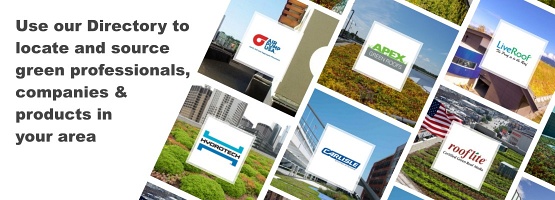Holly Dutton of Propmodo writes:
Green is the new black. For years, the movement toward sustainability and energy efficiency in buildings has been a fast-growing trend, one that has become impossible to ignore for the industry. Now, with more cities and states requiring buildings to be higher performing in regards to energy, emissions, and water conservation, and both landlords and tenants building sustainability goals into their real estate footprints, there is more pressure than ever to go green. A popular trend in building amenities that has emerged since workers began returning to offices has been outdoor green space. It’s hard to find a new, Class A office building without numerous outdoor green spaces these days, and that often includes green roofs. These have become a familiar term for many in the industry, but what makes a green roof, and what are the benefits and challenges of creating one?
The Environmental Protection Agency (EPA) defines green roofs as simply a vegetative layer grown on a rooftop. Green roofs have a long history on buildings owned by the federal government. The General Services Administration (GSA), maintains close to 2 million square feet of green roofs in the U.S., with a long history of building and keeping up green roofs dating back to the 1930s.
Also sometimes called “vegetated roofs” or “living roofs,” green roofs provide shade, remove heat from the air, and reduce temperatures of the surface of the roof and surrounding air. In some cases, green roof temperatures can be 30 to 40 degrees lower than conventional roofs, according to the EPA. All of these factors help to moderate the heat island effect, a phenomenon that happens when dense urban areas with heavy concentrations of pavement and buildings absorb and retain heat, raising the temperature of the area. The effect leads to increased energy costs for things like air conditioning and raises air pollution levels and instances of heat-related illnesses.
The makeup of a green roof typically includes a waterproofing membrane, a growing medium—typically soil—and vegetation. Besides lowering the temperature and providing shade, green roofs also play a big role in stormwater management. In areas where there are a lot of paved or constructed surfaces, stormwater is prevented from being absorbed into the ground. That results in excess runoff that damages water quality by sweeping pollutants into bodies of water. Green roofs reduce the flow of stormwater from a roof by up to 65 percent, according to the GSA, and delay the flow rate by up to three hours. Vegetated roofs can also provide new habitats for plants and animals in urban areas, increasing biodiversity, and it’s anticipated that roofs that are green will last twice as long as traditional roofs.
In Manhattan’s Chelsea neighborhood, Tishman Speyer’s Morgan North office building, formerly a USPS facility, has a two-acre green roof that also hosts numerous amenity spaces and shared workspaces that are the focus of the property’s marketing campaign: the Morgan North website greets visitors with the tagline “Office space that’s a breath of fresh air.”
With all the benefits to the environment, plus an attractive amenity for building tenants, it’s easy to see why rooftop gardens are a familiar amenity that is becoming even more attractive at a time when there’s more impetus than ever to go green. But like a lot of things, the cost to add one is often the biggest barrier. Constructing a green roof is a big upfront cost, and can range between $25 to $30 per square foot, including the design, materials, labor, and installation, according to RAND Engineering & Architecture, a Manhattan-based firm. It would also require ongoing maintenance, an additional cost to consider. But there is a case for the ROI. In one case study from the GSA, a green roof paid for itself after 6 years with a 224 percent ROI with its extended life, stormwater benefits, and added energy savings. Over the past decade, a number of cities around the country have launched initiatives to incentivize adding green roofs to buildings.
Read more: New Regulations and Incentives Make Green Roofs a Staple in Class A Development Playbook
 Greenroofs.comConnecting the Planet + Living Architecture
Greenroofs.comConnecting the Planet + Living Architecture






